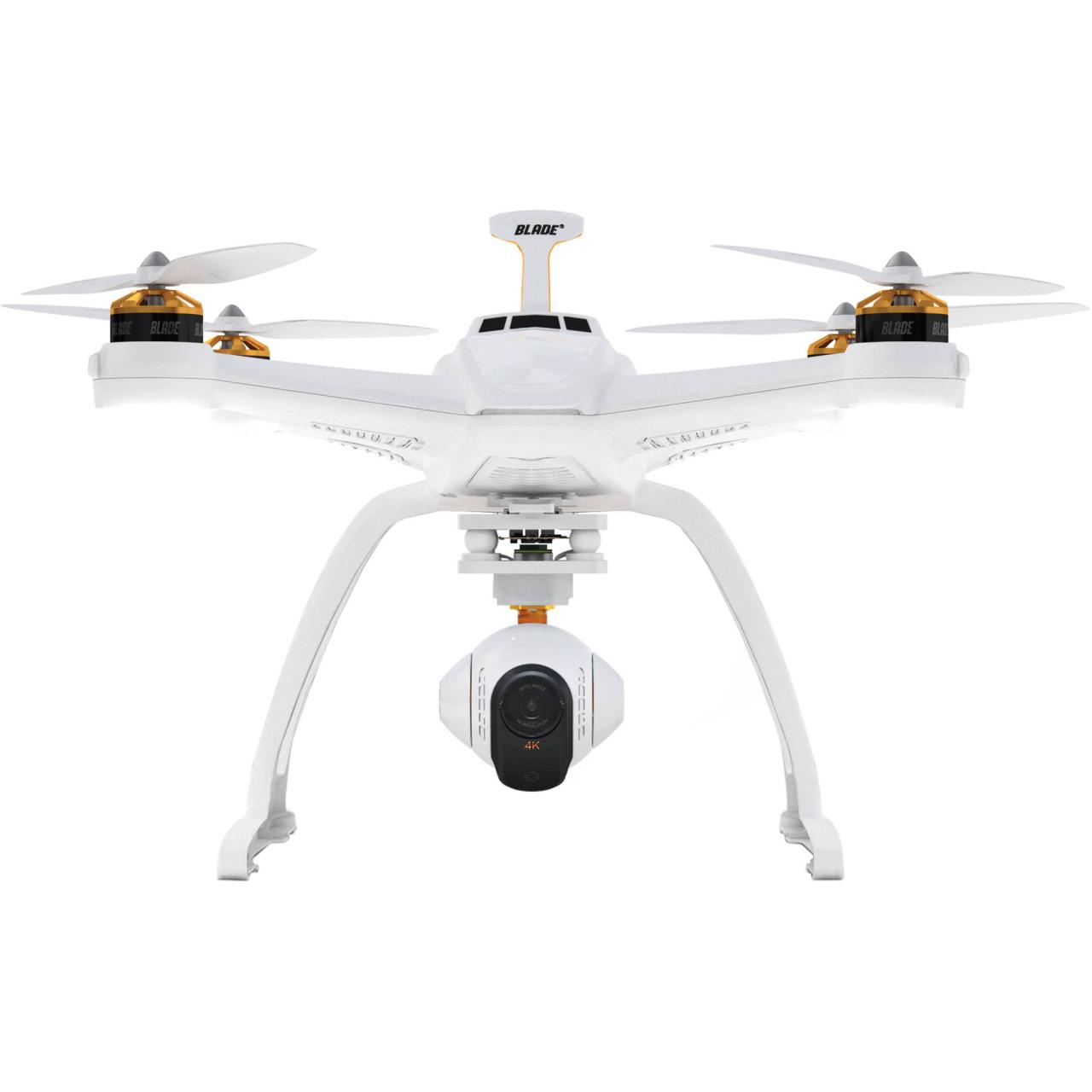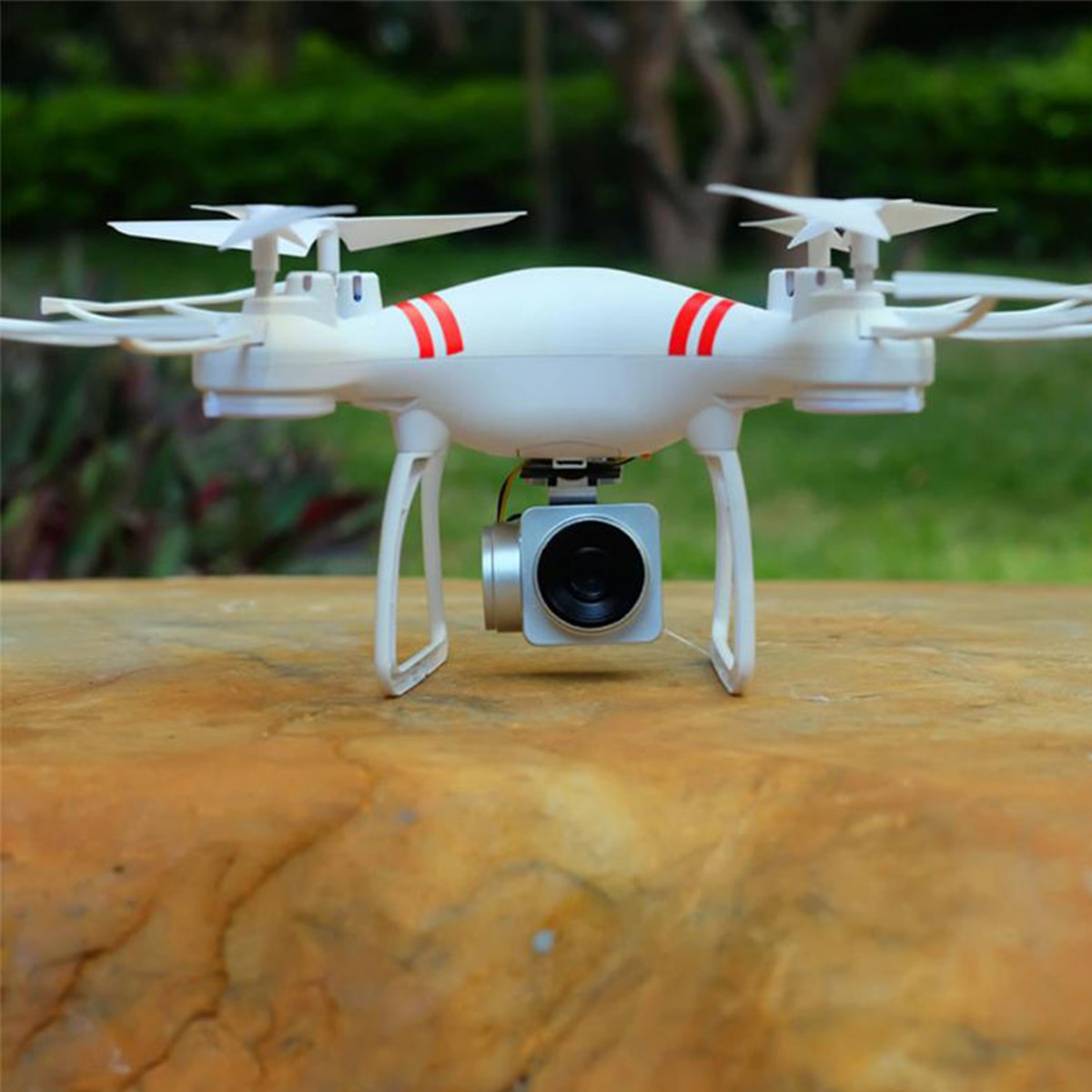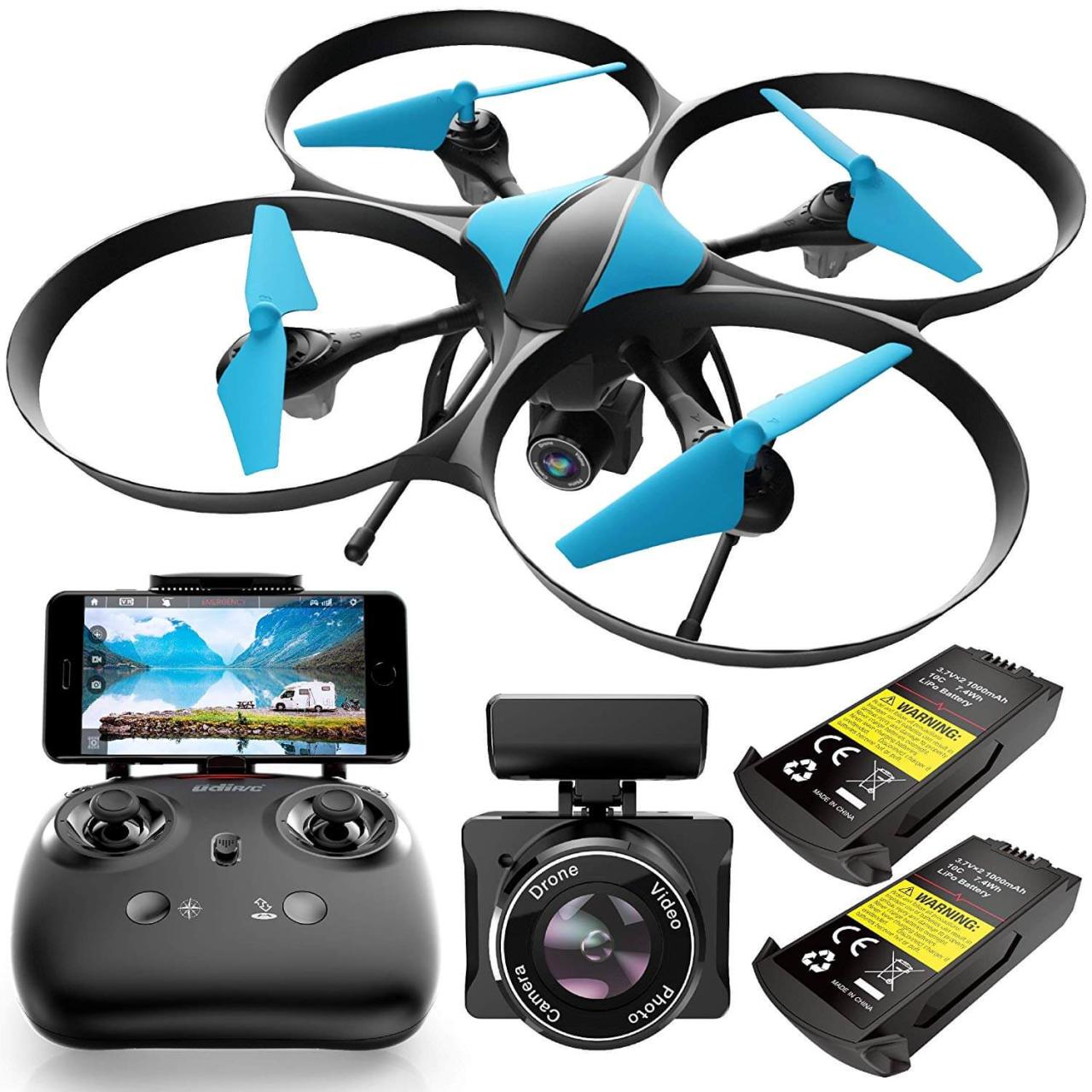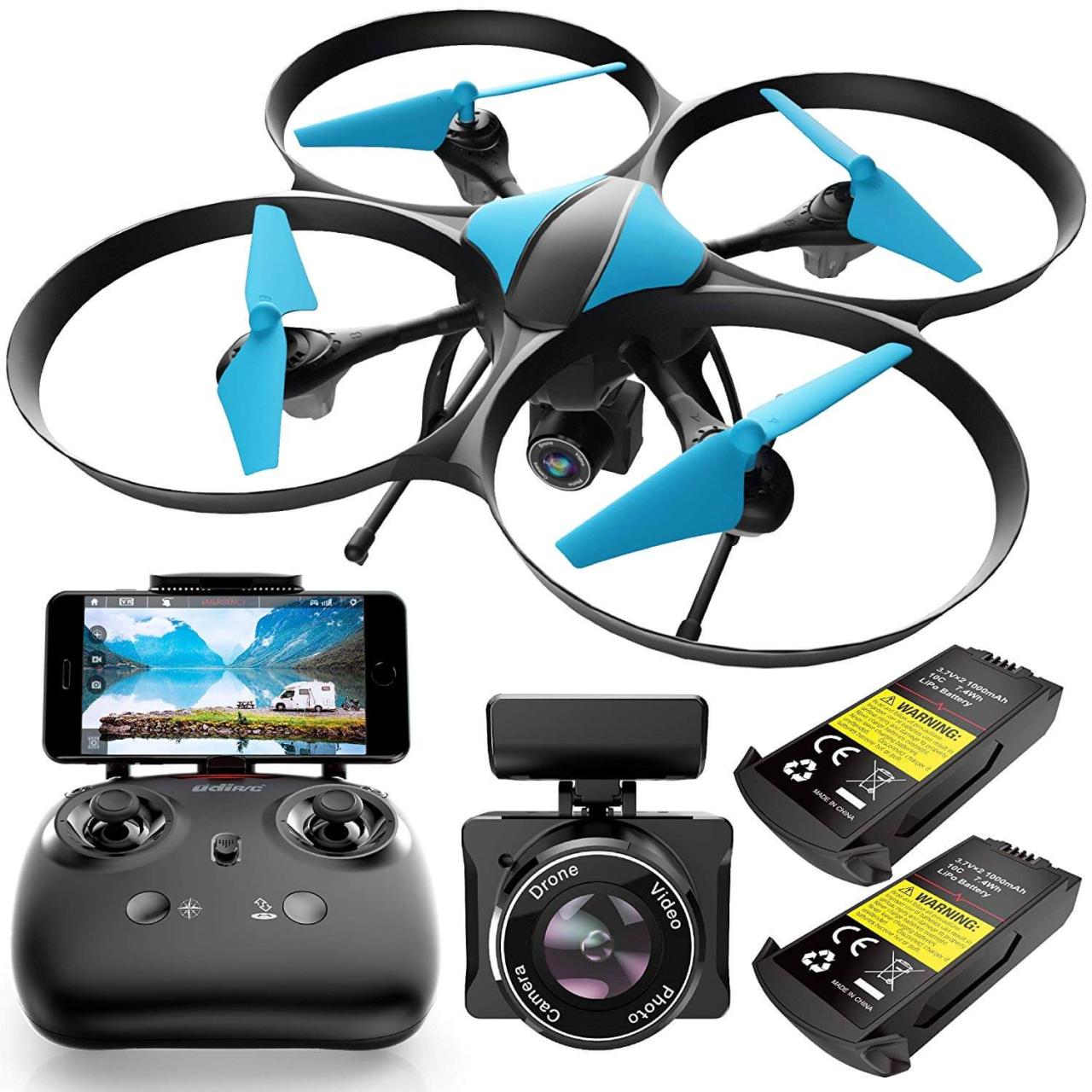Drone with camera technology has revolutionized various sectors, from professional filmmaking to precision agriculture. This exploration delves into the diverse world of drones equipped with cameras, examining their capabilities, applications, and the crucial legal and safety considerations surrounding their operation. We will cover everything from selecting the right drone for your needs to mastering post-processing techniques for achieving professional-quality results.
This guide provides a detailed overview of different drone types, categorized by size, flight time, and camera features, highlighting key specifications of popular models. We will also discuss advanced camera functionalities like obstacle avoidance and intelligent flight modes, comparing various image stabilization systems and video resolutions. Finally, we will explore the legal framework and safety protocols for responsible drone operation, offering a comprehensive understanding of this rapidly evolving technology.
Types of Drones with Cameras
The world of drone cameras is vast and varied, offering a range of options to suit different needs and budgets. Choosing the right drone depends heavily on factors like intended use, budget, and desired features. This section categorizes drones by size, flight time, and camera capabilities, highlighting key features of popular models.
Drone Categories by Size, Flight Time, and Camera Features
| Size | Flight Time (approx.) | Camera Resolution | Camera Features |
|---|---|---|---|
| Nano | 5-10 minutes | 720p – 1080p | Basic stabilization, fixed lens |
| Micro | 10-15 minutes | 1080p – 2.7K | Improved stabilization, digital zoom |
| Mini | 15-25 minutes | 2.7K – 4K | 3-axis gimbal, optical zoom, obstacle avoidance |
| Standard | 25-35 minutes | 4K – 6K | Advanced gimbal, high-quality sensors, intelligent flight modes |
| Large | 35+ minutes | 4K – 8K+ | High-end gimbal, professional camera features, long-range transmission |
Popular Drone Models with Cameras

Three popular drone models represent different price points and capabilities, showcasing the diversity in the market.
| Model | Price Range | Camera Resolution | Flight Time | Key Features |
|---|---|---|---|---|
| DJI Mini 3 Pro (Example) | Mid-range | 4K | 34 minutes | 3-axis gimbal, obstacle avoidance, intelligent flight modes |
| Autel EVO Nano+ (Example) | Budget-friendly | 4K | 28 minutes | 3-axis gimbal, compact size, easy to use |
| DJI Mavic 3 (Example) | High-end | 5.1K | 46 minutes | Dual camera system, Hasselblad sensor, advanced obstacle avoidance |
Drone Camera Types and Their Impact
The type of camera significantly affects image quality and versatility. Fixed cameras are simpler and more affordable, while gimbal cameras offer superior stabilization. Interchangeable cameras provide the most flexibility.
- Fixed Cameras: These are directly mounted to the drone body, offering simplicity and affordability but lacking advanced stabilization.
- Gimbal Cameras: Mounted on a stabilized gimbal, these cameras compensate for drone movement, resulting in smoother footage.
- Interchangeable Cameras: These allow for swapping lenses, offering greater control over focal length and image characteristics. This option is typically found in higher-end professional drones.
Drone Camera Features and Capabilities
High-end drones boast advanced features that enhance their capabilities for various applications. Understanding these features is crucial for selecting a drone that meets specific needs.
Advanced Camera Features
Advanced features greatly enhance the drone’s capabilities beyond basic image capture.
- Obstacle Avoidance: Sensors detect and avoid obstacles, enhancing safety and simplifying flight.
- Intelligent Flight Modes: Pre-programmed flight paths (e.g., orbit, waypoint) simplify complex shots and allow for creative aerial maneuvers.
- Object Tracking: The drone automatically follows a selected subject, maintaining it in the frame throughout the flight.
Image Stabilization Systems
Different stabilization systems offer varying levels of effectiveness in different conditions. Understanding these differences is crucial for choosing a drone suited to the specific needs of the user.
- Mechanical Stabilization (Gimbal): Uses a motorized gimbal to isolate the camera from drone movements, providing superior stabilization, even in windy conditions.
- Electronic Image Stabilization (EIS): Uses software algorithms to stabilize footage, less effective than mechanical stabilization, particularly in challenging conditions.
- Hybrid Stabilization: Combines mechanical and electronic stabilization for optimal results.
Video Resolution Comparison
| Resolution | Pros | Cons |
|---|---|---|
| 4K | High detail, cinematic quality | Larger file sizes, requires more storage and processing power |
| 1080p | Good balance between quality and file size | Less detail compared to 4K |
| 720p | Small file sizes, suitable for quick sharing | Lowest detail, not ideal for professional use |
Applications of Drones with Cameras
Drones with cameras have revolutionized various industries, offering unique perspectives and capabilities. Their applications are diverse and continue to expand.
Industries Utilizing Drones with Cameras

- Real Estate: Aerial photography and videography for property listings, showcasing properties from unique angles.
- Agriculture: Crop monitoring, precision spraying, and livestock management.
- Construction: Site surveying, progress monitoring, and safety inspections.
- Infrastructure Inspection: Bridge, power line, and pipeline inspections, identifying potential problems before they become major issues.
- Emergency Services: Search and rescue, disaster response, and traffic monitoring.
- Film and Television: Aerial cinematography for movies, TV shows, and commercials.
Aerial Photography and Videography
Drones provide unique perspectives for capturing stunning aerial footage. Techniques such as using different flight paths, camera angles, and lighting conditions are employed to achieve desired results.
- Real Estate: Capturing panoramic views of properties and surrounding landscapes to highlight their features and location.
- Filmmaking: Creating dynamic and visually appealing shots, impossible to achieve with traditional methods.
- Tourism: Showcasing the beauty of natural landscapes and urban environments.
Search and Rescue Operations
Drones equipped with thermal cameras are invaluable tools in search and rescue operations. Their ability to cover large areas quickly and identify heat signatures makes them highly effective, although limitations exist in challenging terrain or weather conditions.
- Locating missing persons: Thermal cameras can detect body heat even in darkness or dense vegetation.
- Assessing disaster areas: Quickly surveying affected areas to identify survivors and assess damage.
- Limitations: Range, battery life, and weather conditions can restrict their effectiveness.
Legal and Safety Considerations
Operating drones with cameras requires adherence to regulations and safety guidelines to ensure responsible and legal operation. Ignoring these considerations can lead to accidents, fines, or legal repercussions.
Regulations and Safety Guidelines
- Registration: Many countries require drone registration with the relevant aviation authority.
- Flight Restrictions: Specific airspace restrictions may apply, such as near airports, military bases, or crowded areas.
- Privacy Laws: Regulations concerning data privacy and the recording of individuals without consent vary by location.
- Operating Altitude Limits: Drone operation is usually restricted to a specific altitude to avoid conflicts with manned aircraft.
Safety Hazards and Preventative Measures

- Propeller Hazards: Keep a safe distance from the propellers during operation and ensure that bystanders are kept clear.
- Battery Safety: Use only approved batteries and follow manufacturer’s instructions for charging and storage.
- Loss of Control: Always maintain visual contact with the drone, and be prepared for unexpected events.
- Weather Conditions: Avoid flying in adverse weather conditions, such as strong winds, rain, or fog.
Permits and Licenses for Commercial Operations
Commercial drone operations involving cameras often require specific permits and licenses, ensuring compliance with local regulations and demonstrating competence in safe operation.
Drones equipped with cameras offer a versatile platform for aerial photography and surveillance. The capabilities of these systems are constantly evolving, as evidenced by the development of sophisticated models like the shahed drone , which highlights advancements in both technology and strategic applications. Ultimately, the increasing sophistication of drone camera technology continues to expand the possibilities for both commercial and military use.
Image and Video Processing
Post-processing is crucial for enhancing the quality and aesthetic appeal of drone footage. This involves a series of steps using various software and hardware tools.
Drones equipped with high-resolution cameras offer a versatile platform for capturing aerial imagery, finding applications in various fields. For instance, real-time weather monitoring often utilizes such technology, as seen with the innovative approach of using a dedicated system like the coquihalla weather camera which provides crucial data. This highlights the increasing reliance on drone technology for efficient and effective data acquisition, ultimately improving safety and situational awareness.
The future of drone-based observation systems appears promising.
Step-by-Step Guide to Processing Drone Footage, Drone with camera
- Import Footage: Import your drone footage into your chosen video editing software.
- Initial Review and Selection: Review the footage and select the clips you want to use.
- Stabilization: Use software tools to stabilize any shaky footage.
- Color Grading: Adjust the color and contrast to enhance the mood and atmosphere.
- Audio Editing: Add or adjust audio to enhance the overall experience.
- Transitions and Effects: Add transitions and visual effects to improve flow and visual interest.
- Exporting: Export your finished video in the desired format and resolution.
Software and Hardware Tools
| Category | Examples |
|---|---|
| Software | Adobe Premiere Pro, DaVinci Resolve, Final Cut Pro |
| Hardware | High-performance computer with a powerful processor and graphics card |
Editing Techniques
- Color Grading: Adjusting the color balance, saturation, and contrast to create a specific mood or style.
- Stabilization: Smoothing out shaky footage using software tools.
- Stitching: Combining multiple images or video clips to create a panoramic view or seamless transition.
Ultimately, the responsible and effective use of drones with cameras hinges on a thorough understanding of their capabilities, limitations, and the legal landscape. By carefully considering factors such as budget, intended application, and technical specifications, individuals and organizations can harness the transformative power of this technology while adhering to safety regulations and ethical practices. The future of drone technology is bright, promising even more innovative applications and advancements in the years to come.
Top FAQs: Drone With Camera
What is the typical battery life of a drone with a camera?
Battery life varies greatly depending on the drone model and usage. Expect anywhere from 15 to 40 minutes of flight time on a single charge.
How do I store my drone and its battery safely?
Store your drone in a cool, dry place away from direct sunlight. Store batteries separately in a fire-resistant container and charge them according to the manufacturer’s instructions.
What are the common causes of drone crashes?
Common causes include pilot error (lack of experience, poor judgment), battery failure, mechanical malfunctions, and interference from other electronic devices.
Can I fly my drone anywhere I want?
No. Drone flight is heavily regulated. Check local and national laws and regulations before flying. No-fly zones include airports and restricted airspace.
